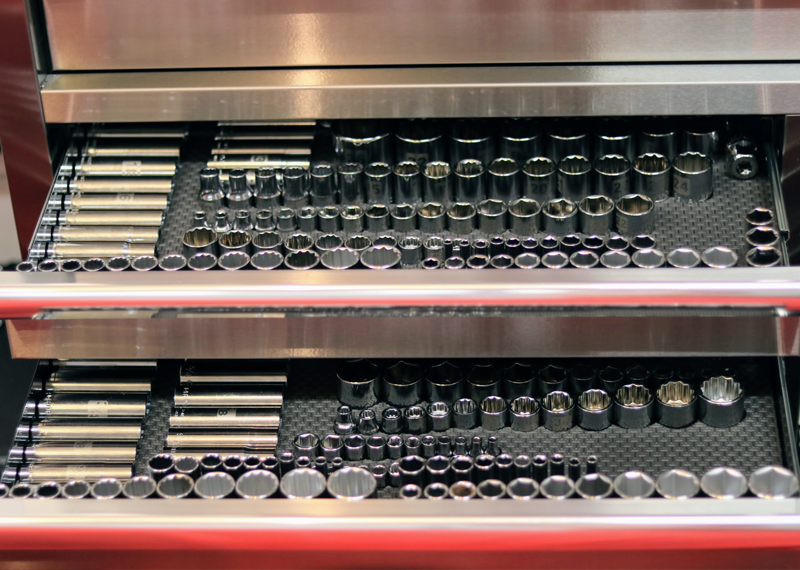Overview
This guide goes through the steps we used to make custom foam inserts to organize our tools. As you have probably found, there are many ways to organize tool drawers. Our biggest aim for our organization method was efficient and easily accessible tool storage - we hoped that this priority of function would lead to visibly pleasant presentation. When searching for a solution, the biggest issue that we found was the inefficient use of space - with 3 tool chests overflowing with tools, space is limited. We also wanted the solution to provide easy visibility of missing tools. Just as a surgeon does a tool/sponge/etc. count before and after a surgery to insure that nothing is left behind, we wanted to be able to easily check that no tools had been left behind in the engine bay or other part of the car.
The above requirements quickly pushed us towards a custom cut foam insert solution. Pre-cut foam inserts were quickly ruled out due to the specialty and miscellaneous tools that are not easily found on pre-cut inserts, but also that most of these inserts are incredibly inefficient (for example, the Kobalt Tools inserts). The next option we came across was Kaizen foam. Although it provides much the same function as our final solution, we were not impressed with it feel and look. The Kaizen foam seems easier to work with, but that also made us think that it would more easily become deformed from extended use. Our solution was to use EVA Foam - the foam tiles that are commonly used for flooring tiles.
After using these foam inserts for years, we have been extremely pleased with their function. The foam has maintained it's shape and has been excellent for our tool storage needs. With this foam we have had no problems with having small strips of foam between tools. One thing to realize is that we made the assumption that a majority of the tools in the drawer would remain in the drawer at any single time - meaning the tools them selves help to provide the rigidness to the foam's structure. It would be nice to add labels to foam for each tool, but for the most part we know our tools, so this was just not worth the space.
Products Used
Tools |
Quantity |
Link |
|---|---|---|
| Hot Knife 1 | Amazon | |
| 2 ft Square | Amazon | |
| 7 inch Square | Amazon | |
| Sharpie Ultra Fine Point Markers 2 | Amazon | |
| Cutting Mat - 48 x 36 inch | Amazon | Materials |
| EVA Foam Tiles 3 | Amazon |
1Alternatively, you could try using a utility knife, like the red dot knife. However, cutting with this or a general utility knife, took a lot longer to gut through the foam.
2 We just used a Sharpie fine point marker to outline the tools, but we came across a suggestion to try a long nosed fine tip marker. We haven't had a chance to try it, but seems like it could offer a more precise trace of each tool.
3 We especially like this specific pattern of EVA foam.


